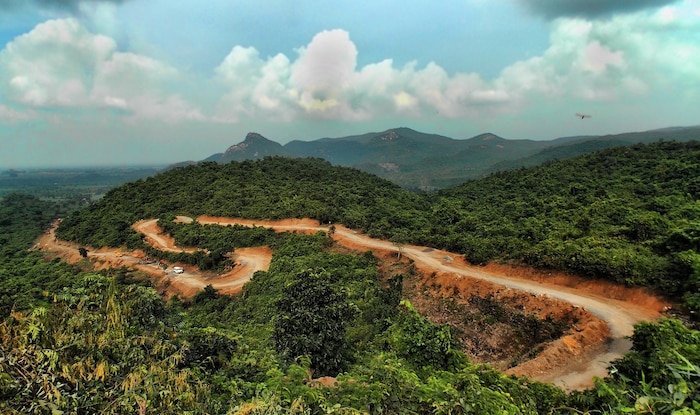Ajodhya Temple Architecture Guide
Share
Ajodhya, a city steeped in history and spirituality, is renowned for its intricate temple architecture. This guide will take you through the architectural marvels of Ajodhya, focusing on the key features, styles, and historical significance of its temples. Whether you are a history enthusiast, an architecture lover, or a spiritual seeker, Ajodhya offers a unique glimpse into India's rich cultural heritage.

Historical Background of Ajodhya
Ajodhya is not just a city; it is a symbol of faith for millions of Hindus around the world. Believed to be the birthplace of Lord Rama, the city has been a pilgrimage site for centuries. The temples here are not just places of worship; they are repositories of art, culture, and history.
The architecture of Ajodhya reflects a blend of various styles that have evolved over the centuries. From ancient structures dating back to the Gupta period to modern temples, each building tells a story of its time.

Key Architectural Features
1. Nagara Style
The Nagara style is predominant in North Indian temple architecture, characterized by its beehive-shaped shikharas (towers). Ajodhya's temples, such as the Hanuman Garhi and Nageshwarnath Temple, showcase this style beautifully. The intricate carvings and sculptures on the walls depict various deities and mythological scenes, adding to the aesthetic appeal.
2. Shikhara
The shikhara is the most striking feature of temples in Ajodhya. Rising majestically, it symbolizes the connection between the earthly and the divine. The shikhara is often adorned with ornate carvings, making it a focal point of the temple's architecture.
3. Mandapas
Mandapas, or pillared halls, serve as gathering spaces for devotees. These structures are often intricately designed, with detailed columns and ceilings that reflect the craftsmanship of the artisans. The mandapas in Ajodhya provide a serene environment for worship and reflection.

Notable Temples in Ajodhya
1. Ram Janmabhoomi Temple
The Ram Janmabhoomi Temple is perhaps the most significant temple in Ajodhya. It is built on the site believed to be the birthplace of Lord Rama. The temple's architecture is a blend of traditional and modern styles, featuring intricate carvings and a towering shikhara. The temple complex is designed to accommodate thousands of pilgrims and visitors.
2. Hanuman Garhi
Hanuman Garhi is another important temple dedicated to Lord Hanuman. The temple is situated on a hill, offering a panoramic view of the surrounding area. Its architecture features a unique blend of Nagara style and local influences, with vibrant murals and sculptures that depict the life of Hanuman.
3. Nageshwarnath Temple
Dedicated to Lord Shiva, the Nageshwarnath Temple is an architectural gem. The temple's shikhara is adorned with intricate carvings, and the sanctum sanctorum houses a revered Shiva linga. The temple is a popular pilgrimage site, especially during the festival of Maha Shivaratri.
Best Time to Visit Ajodhya
The ideal time to visit Ajodhya is between October and March when the weather is pleasant and conducive for exploration. During this period, temperatures range from 10°C to 25°C, making it comfortable for outdoor activities and temple visits. Additionally, major festivals like Ram Navami and Diwali attract thousands of devotees, adding to the vibrant atmosphere of the city.
Weather Information
- October to March: Pleasant weather with temperatures ranging from 10°C to 25°C.
- April to June: Hot summers with temperatures soaring above 40°C.
- July to September: Monsoon season, bringing heavy rainfall and cooler temperatures.
Things to Do in Ajodhya
While visiting Ajodhya, there are several activities to engage in:
- Temple Visits: Explore the various temples and their unique architectural styles.
- Cultural Tours: Participate in guided tours that delve into the history and significance of Ajodhya.
- Local Cuisine: Savor traditional dishes at local eateries, experiencing the flavors of the region.
For more activities and experiences, check out Things to Do in Ajodhya.
Accommodation Options
Finding a comfortable place to stay is essential for a fulfilling trip. Ajodhya offers a range of accommodations, from budget hotels to luxury resorts. Here are some options:
- Budget Hotels: Affordable stays with basic amenities.
- Mid-range Hotels: Comfortable accommodations with additional services.
- Luxury Resorts: High-end stays offering premium facilities and services.
For booking hotels in Ajodhya, visit Hotels & Flights.
Getting to Ajodhya
Ajodhya is well-connected by road and rail. The nearest airport is in Faizabad, approximately 8 km away. Regular trains and buses operate from major cities, making it accessible for travelers.
For flight bookings, check out Flights to Ajodhya.
Conclusion
Ajodhya is a treasure trove of architectural beauty and spiritual significance. The temples here are not just structures; they are a testament to the rich cultural heritage of India. Whether you are drawn by the intricate designs, the historical narratives, or the spiritual ambiance, Ajodhya promises an enriching experience. As you wander through its sacred spaces, you will find yourself immersed in a world where history and spirituality intertwine, leaving you with memories that last a lifetime.
So, pack your bags and embark on a journey to Ajodhya, where every temple tells a story waiting to be discovered!



